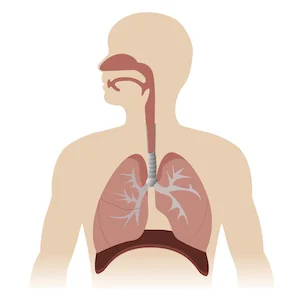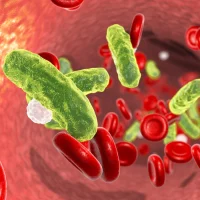Noninvasive diagnostic tests can ensure the early identification and treatment of viral infections in patients with haematological malignancies. New research from France assessed the clinical relevance of a positive virus polymerase chain reaction (PCR) test on nasal swabs in haematology patients at ICU admission.
"Respiratory virus detection in the upper airway by multiplex PCR assay is common in critically ill haematology patients. In patients with ARF [acute respiratory failure], respiratory virus detection was independently associated with ICU mortality," writes Jérôme Legoff, MD, of the Universite Paris Diderot, 27066, Microbiology, Paris, France, with co-authors. The findings are published online in the American Journal of Respiratory and Critical Care Medicine.
In the study, nasal swabs were performed in 747 patients (447 with ARF), in whom 21.3% tested positive (56.4% rhinovirus/enterovirus and 30.7% influenza/parainfluenza [PIV]/respiratory syncytial virus [RSV]). Data analyses also showed that respiratory viruses were more frequently detected in patients with ARF (25.3%), 16.3% of those without ARF tested positive and also 14.1% without any respiratory symptom.
Of note, viral distribution was also different, with influenza/PIV/RSV more frequently identified in patients with ARF, but never identified in patients without respiratory symptoms. Other viruses, like rhinovirus/enterovirus, coronavirus, adenovirus, human metapneumovirus (hMPV), and bocavirus, were found to be equally distributed in both groups of patients.
In a linked commentary, Pedro Póvoa, MD, PhD, and Luís Coelho, MD, both with the Polyvalent Intensive Care Unit, CHLO, Hospital de São Francisco Xavier (Lisbon, Portugal) say that Legoff et al.'s findings in critically ill haematology patients confirmed previous studies, but in addition they showed that viruses are also present in patients without ARF as well as without any respiratory symptom.
New molecular diagnostic assays, particularly multiplex reverse transcription polymerase chain reaction (RT-PCR), provide clinicians the ability to routinely assess the presence of viruses in patients with pneumonia, increase our knowledge of the role of viruses in pneumonia and serve as the tools to better characterise the epidemiology of respiratory viral infections, according to Drs. Póvoa and Coelho.
"However, this new data concerning the presence of virus in the respiratory tract has to be carefully interpreted since viral detection does not necessarily mean viral infection, since, the viral detection can correspond to healthy carriers, viral replication without organ involvement or true viral infection," the doctors explain.
They also say that Legoff's study raises several questions, in particular, what is the “normal” virome as well as its clinical implications and, in the event of an ARF patient with a positive viral test what to do in the absence of any specific antiviral drug.
"Hopefully, this enhanced knowledge concerning the role of viruses in the respiratory tract and prevalence of respiratory viruses in severe respiratory infections can lead to improved management of pneumonia in the future," the commentary concludes.
Source: American Journal of Respiratory and Critical Care Medicine
Image credit: iStock
References:
Legoff J et al (2018) Clinical Significance of Upper Airway Virus Detection in Critically Ill Hematology Patients. Am J Respir Crit Care
Med [online ahead of print] 19 Sept 2018;
www.atsjournals.org/doi/abs/10.1164/rccm.201804-0681OC
Póvoa P, Coelho L (2018) Clinical Significance of Viral Detection in Critically Ill Patients; More Questions than Answers. Am J Respir Crit Care Med. Article in Press, Published Online: 12 October 2018 https://doi.org/10.1164/rccm.201809-1778ED
Póvoa P, Coelho L (2018) Clinical Significance of Viral Detection in Critically Ill Patients; More Questions than Answers. Am J Respir Crit Care Med. Article in Press, Published Online: 12 October 2018 https://doi.org/10.1164/rccm.201809-1778ED
Latest Articles
Infections, haematology, respiratory tract, Viruses
Noninvasive diagnostic tests can ensure the early identification and treatment of viral infections in patients with haematological malignancies. New resea...









